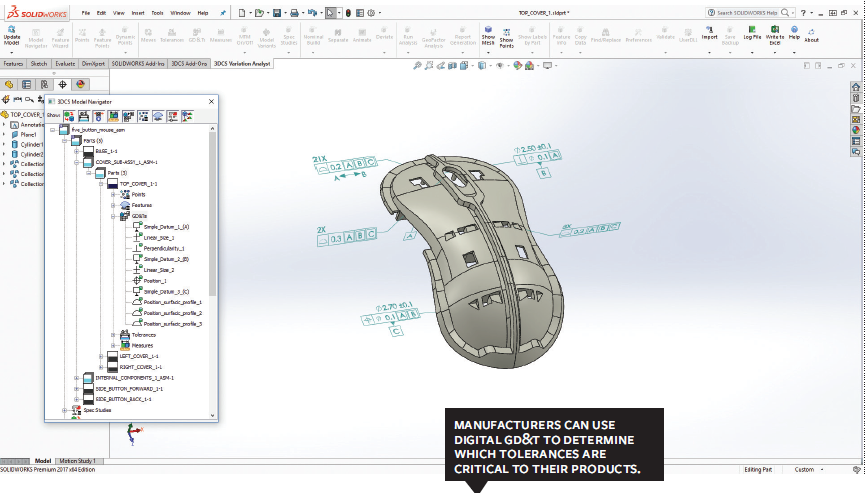
Our mission is to help executives realize value from tech-led initiatives without disruption.
We digitally publish research and thought leadership guidance, enabling better investment and deployment decisions.
Chief Analyst and CEO at Lifecycle Insights
As Chief Analyst, Chad Jackson leads Lifecycle Insights’ research and thought leadership programs, attends and speaks at industry events, and reviews emerging technology solutions. As CEO, Chad defines Lifecycle Insights’ vision and change initiatives.
Chad’s twenty-five-year career has focused on improving executives’ ability to reap value from technology-led initiatives. He has surveyed thousands of manufacturers, produced hundreds of research and thought leadership publications, and presented dozens of times domestically and internationally. He imparts an influential, independent, and insightful voice on the industry’s transition to smart, connected products.
https://www.lifecycleinsights.com/who-we-are-admin/
Okay so let's talk about Dimensional Control Systems DCS and their product 3DCS which is a tolerance simulation and analysis application. So first off this tool can run as a plugin to most of the mechanical CAD applications that are out there; NX, CATIA, a bunch of other ones or can run independently and we'll walk through the work flow here in a second but running it independently or standalone is actually important because you might be getting parts from multiple CAD applications and you might need to bring them together to run the analysis.
Let’s walk through the steps of the process and how it works and in that we'll kind of expose why this tool is a little bit different.
First off, let's walk through this setup. So what you can do is you can read the geometry and the PMI or other tolerance information that you already have in your CAD application. There's a separate definition for what you're going to be using for your simulation and analysis because you might need that to vary a little bit from the original definition. Okay so you read that in. You’re bringing all your PMI that tells you how individual parts are going to vary and then you define how parts are going to be connected or assembled together, right, which will determine the stack up for the tolerance analysis.
Okay, so once you have that setup, you kind of read [the PMI] in, you can then determine if there's anything missing in terms of a tolerance; if any of the existing tolerances need to be tightened up or loosened. Right you can do that in a separate definition. That's part of the plug-in part of the standalone tool.
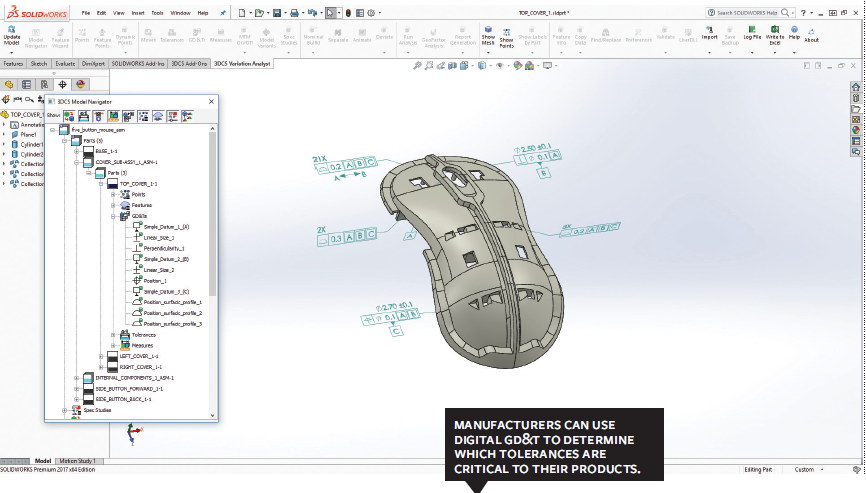
[There] is a nice kind of visualization of [the variation] that you can press this little button that says deviate and you can see the surfaces of the part that have tolerances on them move slightly. They animate [and] you can see that happening throughout your assembly. So it gives you a nice visualization of how the parts are going to be varying or the tolerances in the assembly.
The second thing, the second key capability per step here is iterating. So if you make a change in your original CAD application to the original geometry or the PMI you can propagate that change down into the definition you're using for your tolerance simulation and analysis, and vice versa, you can push up or down on that which is good because you're going to want to iterate. You're going to want to explore different alternatives and different possibilities there.
The third thing or the third step that happens or occurs is you actually run the simulation. So after you've defined all the tolerances you press simulate. It actually runs a Monte Carlo simulation, where according to the distribution you define for each tolerance, you know think about a bell curve for each tolerance, it will then do a calculation of where that tolerance falls for that particular iteration and that will do the stack-up analysis. You can tell it to run as many [simulation runs] as you want so you're getting a statistical variation that represents a number of assemblies that you're bringing together [to] analyze for whatever measurements you define. Say a certain clearance between two parts, if it exceeds that minimum [value] then you have a failure. So according to the analysis that 3DCS runs, it will tell you what percentage of your assemblies are going to fail according to quality criteria. It will also give you attribution to which tolerances in which connection points, which assembly points contributed at the highest rate to those failure rates.
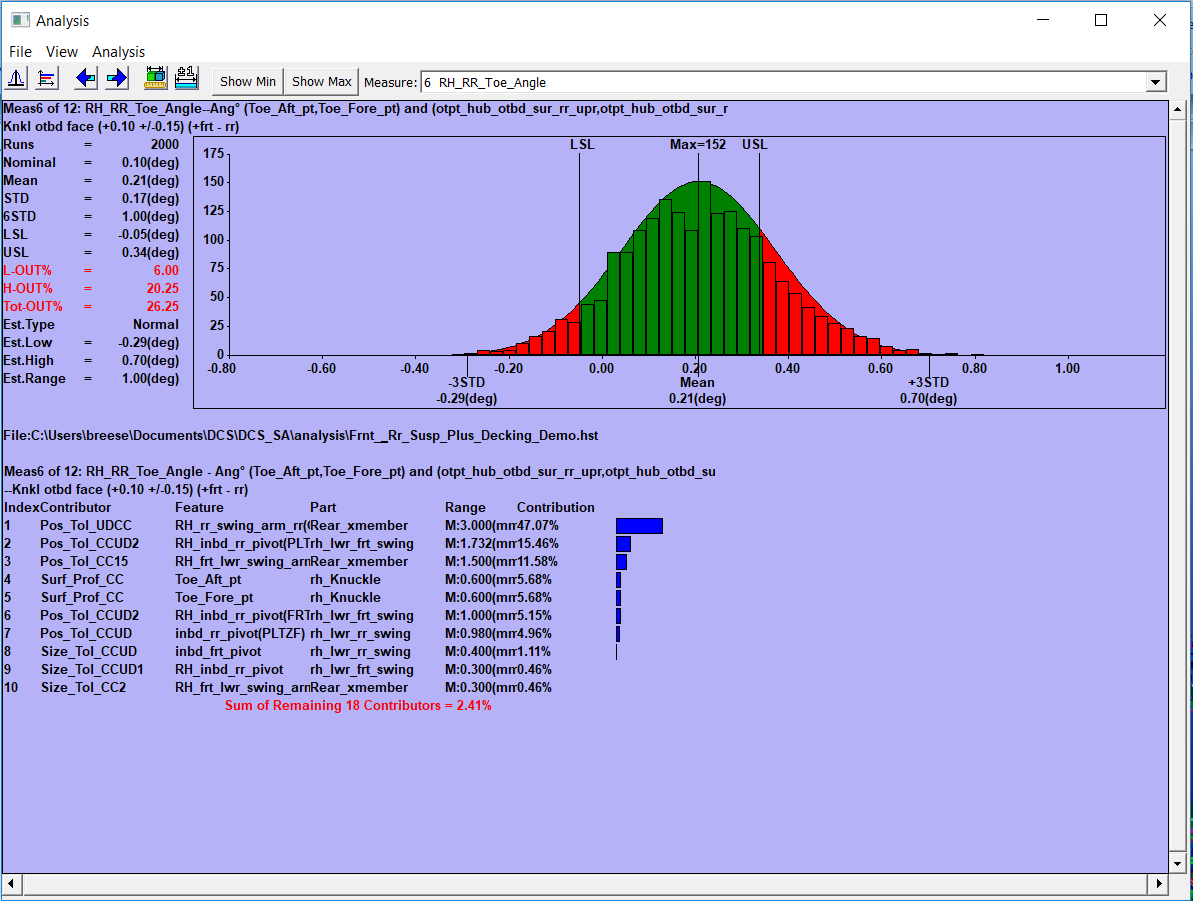
Okay, so you have a root cause analysis. Now you can go back and start making modifications and this is where that iterative process starts to come into play. You can make changes to the geometry, in the PMI, [and] bring it down in the definition 3DCS is using and rerun that simulation. So that's all well and good and interesting.
That kind of gives you the analysis along the way that an engineer can use to make the right decisions so that you're going [to] have good manufacturing outcomes, but it doesn't stop there. There are extra steps that you can go through [to improve your outputs]. For example you can export all of the touch points [from] all the measurements that you want to follow that are going to be criteria for success or failure. You can export that [from 3DCS] and that can be imported into your CMM application that is used to program the CMM equipment. Once you have that the CMM equipment can then take measurements on a [batch of parts], a small batch or large batch, a large volume of parts and assemblies and capture that data in a CSV file. You can then import that back into 3DCS, back into the same environment where you ran your simulation before and you can look at the same exact analysis except you're looking at real physical quality measurement data as opposed to simulated quality measurement data. [So] now you have real-world data you're running the same type of analysis, the same type of attribution, and you can make changes if you want to go through the closed-loop process and get better outcomes.
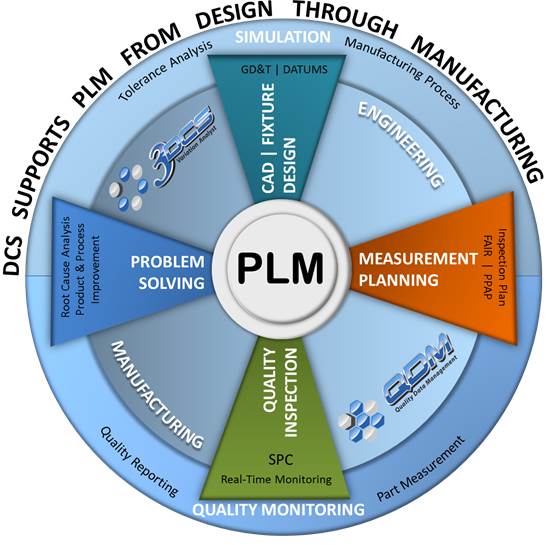
Another step [that can be taken], DCS actually has another application; a quality data management solution that will manage quality data in batch. It captures [data over time or from measurement devices] and you can actually plug the 3DCS tool that runs in your CAD application or stand alone to look at that data and use that over time. So it's not just small batches of CSVs that you want to bring back in, you want to monitor it against the actual production data, quality data that happens over time.
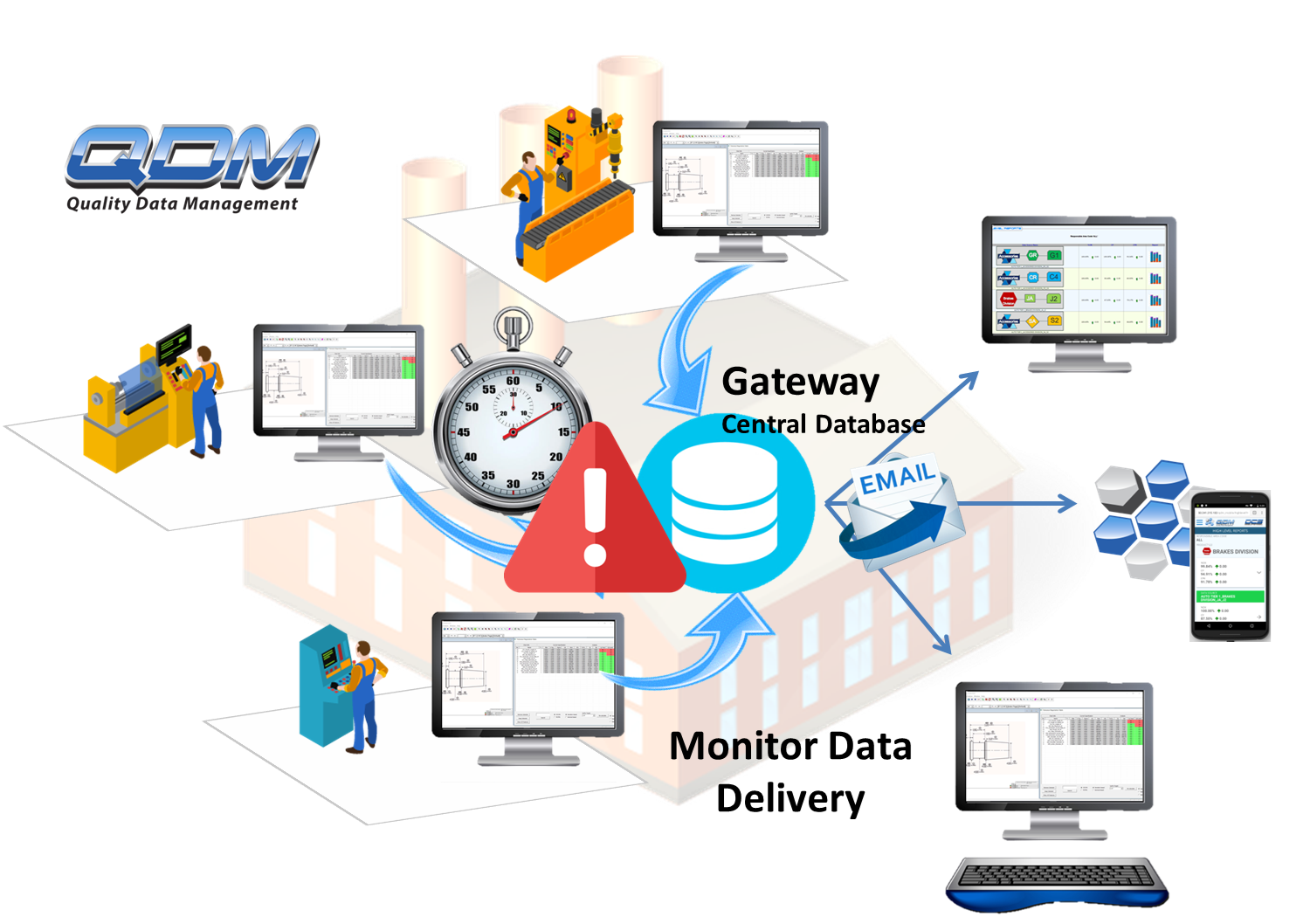
As you can see, this is a good closed loop process going all the way from the design and doing stack up analysis and simulation to make better decisions up front that can feed the CMM programming. You can track that against the small batches and make better decisions there with the same tools and then you can track it against large volumes with QDM quality data management software that they offer as well. [DCS] is one of the few providers out there that offers all of this in an integrated suite. That is one of the big differentiators that they have.
Another big differentiator that they have is the simulation aspect. Running the Monte Carlo simulation against all the tolerances according to a distribution that you define and seeing what the failure rate is, then getting attribution that enables you to make better decisions up front. So there's a lot to like in this tool and there are tools for engineers doing up front design and there are tools for quality people on the back end. There are a lot of capabilities there.
That's it, thanks for listening. Take care and talk soon.
These Stories on CATIA
No Comments Yet
Let us know what you think